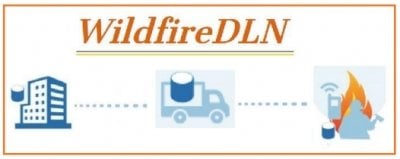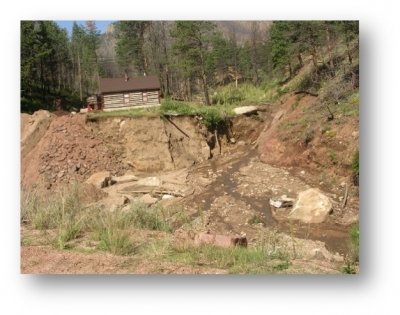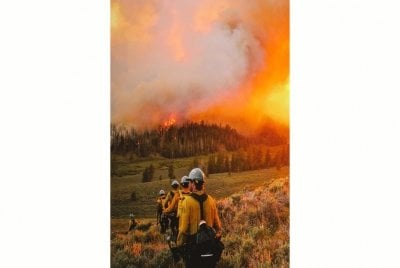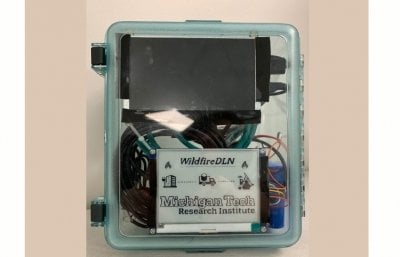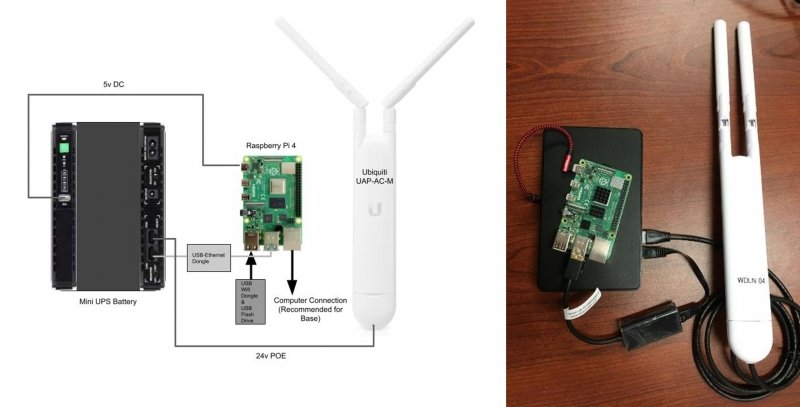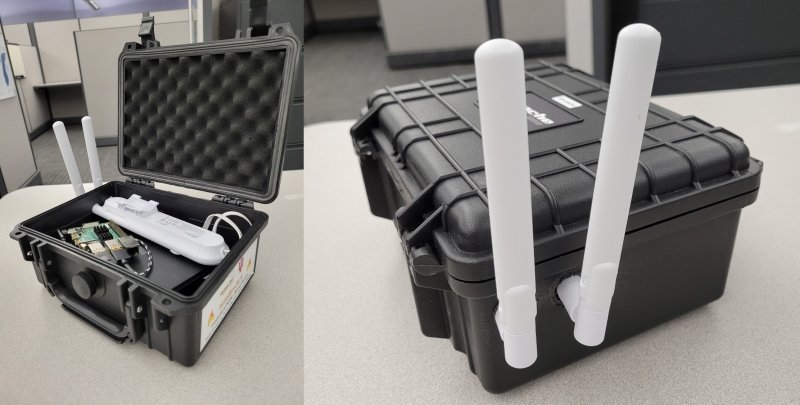Development of the WildfireDLN Wildland-fire Data Logistics Network
Project Summary
During wildfire and prescribed fire operations firefighters face communication challenges such as network coverage and data portability. As a result, incident command decisions and wildfire containment are delayed, possibly contributing to human illness and injury, including deaths, environmental impacts, and property damages. Improving access to information for wildland fire incident operations would improve public safety through effective fire containment.
Funded through a Cooperative Agreement with the National Institute of Standards and Technology Public Safety Communication Research program (NIST-PSCR), WildfireDLN is a transformational application of networking and data logistics software developed and built with and for operational partners in wildland fire incident operations logistical support. Current data delivery capabilities for fire operations cannot transmit large data resources, regularly obstructing wildland firefighting operations by the limitations in the construction and maintenance of ad hoc communication networks. WildfireDLN can deliver rich and informative data with a robust system that supports file transfer and access across disconnected, heterogeneous networks.
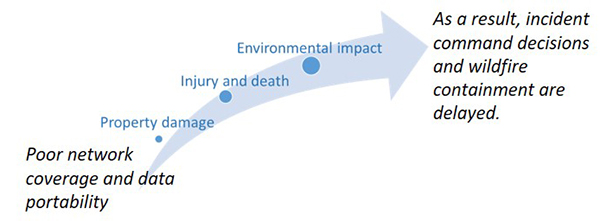
Poor network coverage and data portability cause delayed incident command decisions and wildfire containment leading to property damage, injury and death, and environmental impact
Project Goals
To develop a wildland-fire data logistics network to enhance and extend current operational data sharing capabilities for:
- Improved firefighter and public safety
- Better wildland fire predictions
- More informed fire operations
To deliver data with a robust system that supports file transfer and access across disconnected, heterogeneous networks.
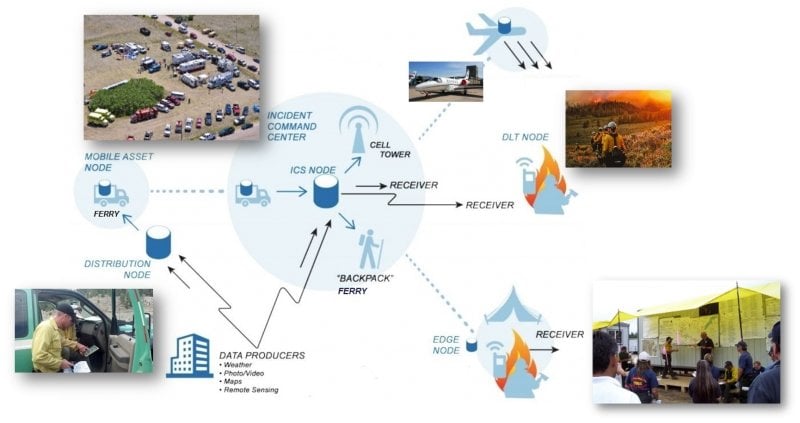
Conceptual overview of the WildfireDLN system deployment, and design of the prototype data node. The WildfireDLN directly supports resilience in the face of scenarios found in wildland fire operations with local operation, providing solutions for intermittent and heterogeneous connectivity problems. The storage icons (barrels) at the various nodes represent storage and includes both SSD and any other form of medium-to-long term persistence.
Project Objectives
Develop software tools for data logistics based in existing resources.
- Deploy and test prototype hardware-software system that:
- integrates the new data sharing system with existing capabilities and relevant data
- demonstrates automated data ferrying with seamless user experience
- Work with the wildland fire management community to define specific requirements of an enhanced, resilient data-sharing system.
Provide for future technologies and capabilities.
- Design and develop an asynchronous and heterogenous data system
- Develop flexible open-source software that allows for additional functionality and broad application
- Co-develop, with fire operations personnel, software systems for data logistics based on existing tools, including future proofing and generation of ideas to advance capabilities with further research and development.
System Overview
The research planned addresses the need for improved resilience. The WildfireDLN is designed to make current systems stronger, more integrated, and with more resilient features than current digital networking systems allow.
WildfireDLN Key Features/Tools
WildfireDLN has three important attributes that directly support resilience concerns: local operation, intermittent connectivity, and heterogeneous connectivity.
- High-performance wireless that removes data access barriers
- Automated/integrated connectivity that has multiple distribution modes in dynamic mobile environments
- Seamless user experience and augmented access to critical repositories (NIFC’s Fire and Aviation Management’s Enterprise Geospatial Portal)
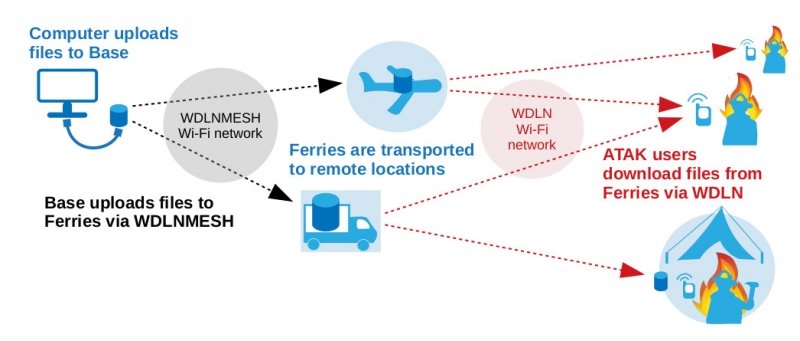
Conceptual overview of the WildfireDLN system key features and system overview. Computer uploads files to a base and the base uploads files to Ferries via WDLNMESH and the ferries are transported to remote locations where they are apart of the WDLN wi-fi network and ATAK users can readily download files from the ferries via WDLN while in remote, heterogenous locations.
WildfireDLN Prototype and Architecture
Portable hardware Data Ferry:
- Raspberry Pi
- Ubiquiti antenna
- Mini UPS
Overview figure of the WildfireDLN system architecture including the base station, ferry, and front-end system is below.
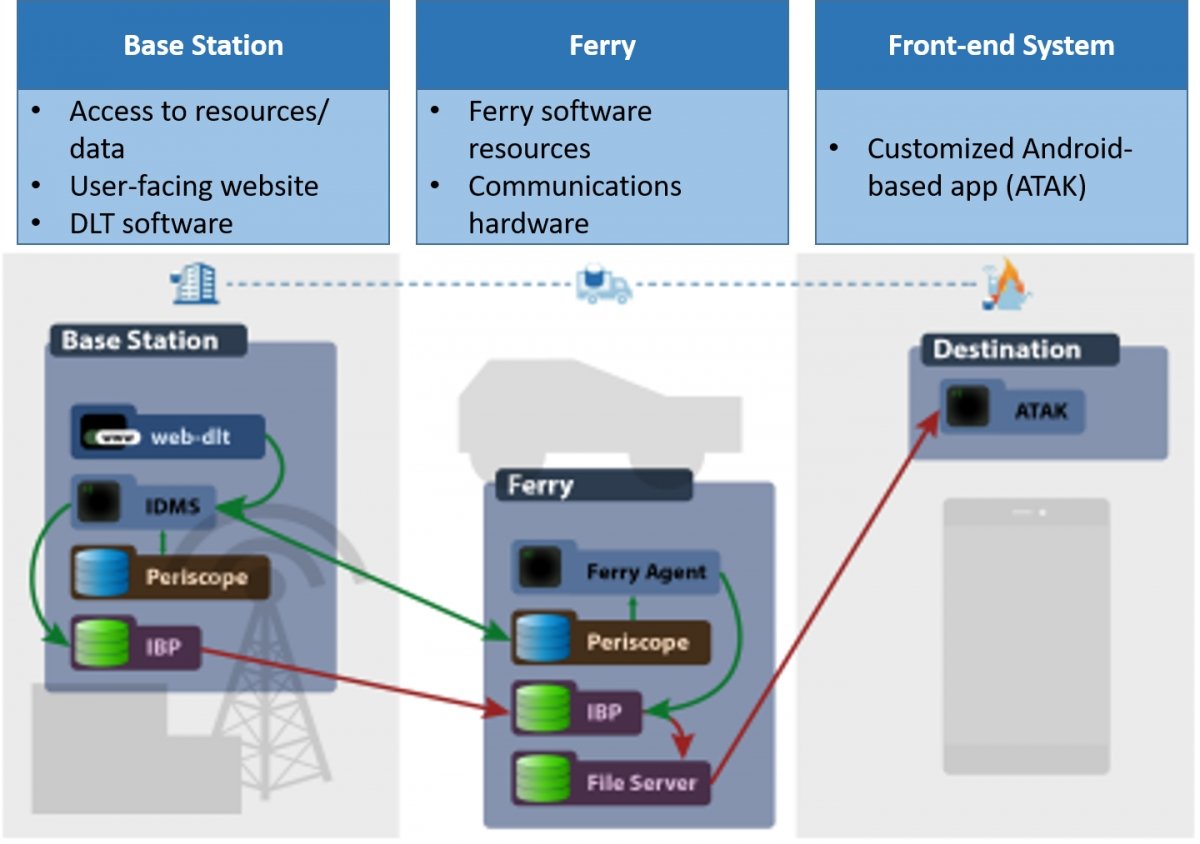
Overview of the WildfireDLN system architecture including the base station, ferry, and front-end system. The base station has access to resources and data, user-facing web site, and DLT software. The web-dlt interface communicates to the IDMS which communicates to the IBP as well as the periscope. The base station’s IDMS communicates directly with the ferry’s periscope and the base IBP communicates directly with the ferry’s IBP. The Ferry itself contains ferry software resources and communications hardware. Within the ferry interface it contains the ferry agent, the periscope, IBP, and the file server. The ferry agent communicates to the periscope and IBP. The ferry IBP communicates directly to the file server. The front-end system is a customized android-based app (ATAK) which is the interface that the user uses. The ferry file server connects with the ATAK which can then be accessed by the user.
Completed Project Outcomes
WildfireDLN, a co-designed prototype of a software-hardware system, built from storage-enabled network components and tested with operational partners in real-world conditions.
The result is an accessible, usable, and cost-effective system that firefighters and operations support can use to send and access large, critical datasets in wilderness areas that allows for resilient and effective data sharing and communication during a wildland fire incident

